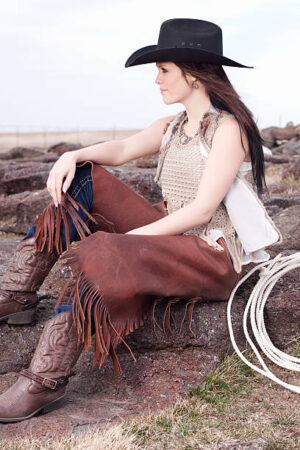Western women’s clothing is a vast and diverse realm of fashion that reflects the changing times, cultural influences, and personal expression. It encompasses an array of styles, garments, and accessories that cater to the preferences and needs of women across the Western world. In this article, we’ll explore the multifaceted world of Western women’s clothing, emphasizing its evolution, cultural significance, and the role it plays in empowering women.
The Evolution of Western Women’s Clothing
The history of Western women’s clothing is a fascinating journey through time. Over the centuries, it has been shaped by a multitude of factors, including social norms, technological advancements, and artistic movements. From the voluminous gowns of the 18th century to the revolution of women’s pants in the 20th century, Western fashion has undergone constant transformation.
The 1920s marked a turning point with the emergence of the flapper style, characterized by shorter hemlines, dropped waists, and a rejection of traditional gender norms. This era set the stage for women’s liberation, a theme that resonates throughout the history of Western fashion.
Cultural Significance of Western Women’s Clothing
Western women’s clothing has cultural significance that extends beyond its aesthetic appeal. It reflects the values, ideals, and societal shifts of its time. For example, the suffragette movement in the early 20th century saw women donning white dresses as a symbol of their fight for voting rights. In the 1960s, fashion echoed the spirit of rebellion and freedom with the hippie movement, embracing long, flowing dresses and tie-dye patterns.
The “power suit” of the 1980s was not just a fashion trend; it was a statement of women’s growing influence in the business world. The suit represented authority and professionalism, showing that women were a force to be reckoned with in the workplace.
Empowerment through Style
Western women’s clothing has often been a means of empowerment. The right outfit can boost a woman’s confidence, enabling her to face challenges and take on the world with self-assuredness. When a woman feels comfortable and confident in what she wears, she is better equipped to achieve her goals and express her identity.
Fashion also provides an opportunity for women to challenge stereotypes and break boundaries. Whether through androgynous styles or embracing traditionally male attire, women have used clothing as a tool for self-expression and to challenge societal norms.
The Modern Landscape
Today, Western women’s clothing is more diverse and inclusive than ever. It accommodates various body types, personal styles, and cultural backgrounds. From casual and athleisure wear to eco-friendly and sustainable fashion, the industry continues to evolve to meet the diverse needs of modern women.
In the age of e-commerce and social media, fashion is accessible to women around the world, allowing them to connect, share ideas, and discover new trends and styles. The fashion industry also recognizes the importance of sustainability and ethical practices, addressing concerns about the environment and labor conditions.
Conclusion
Western women’s clothing is a dynamic and ever-evolving aspect of culture and identity. It encompasses a rich history, cultural significance, and a vital role in empowering women to express themselves. The diverse tapestry of styles and garments available today reflects the wide array of choices and opportunities for women to celebrate their individuality. As we move forward, Western women’s clothing will undoubtedly continue to be a canvas for self-expression and empowerment, inspiring women to embrace their unique styles and make their mark on the world.

